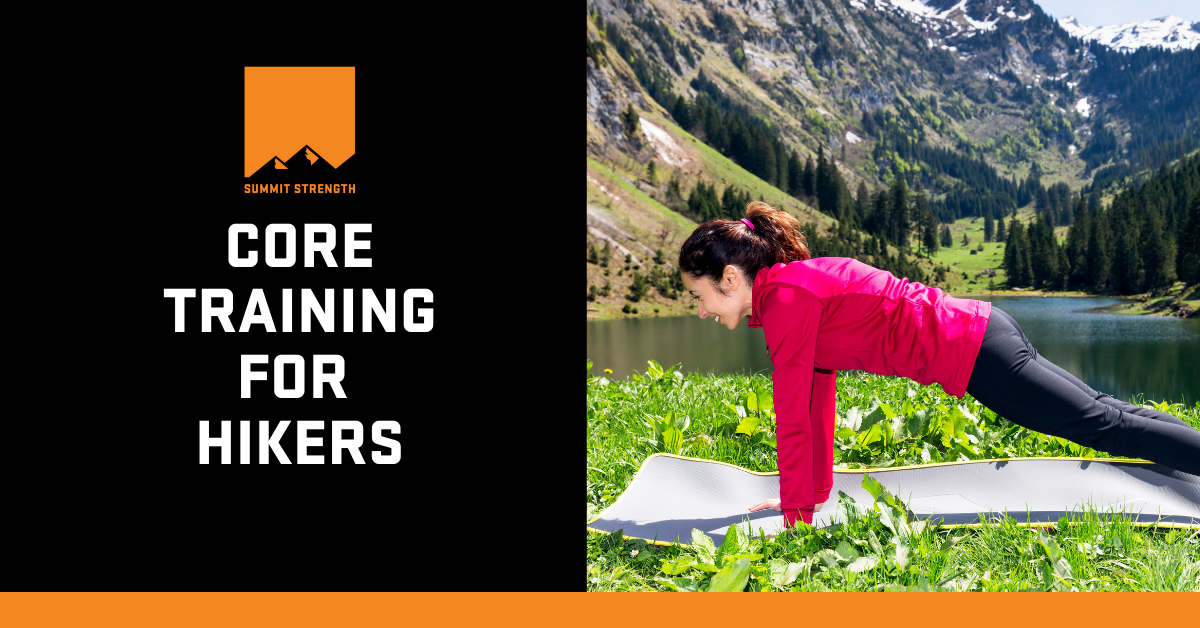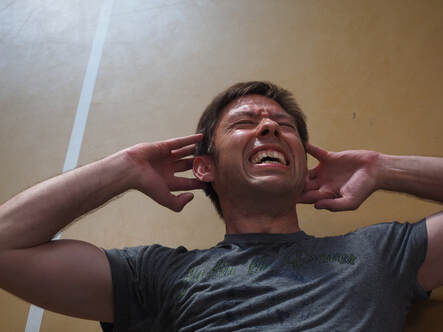|
Core strength is crucial for a hikers performance and comfort on the trail. And it is something almost all hikers should be working on. But unfortunately the way most hikers go about training their core leaves a lot to be desired... Inside this article we explore what modern core training is all about, how it can help hikers on the trail and how to apply this into your own training. Why Hikers Should Be Training Their CoreHaving a strong core is essential to help stabilise the spine, allow efficient movement and help protect the lower back from pain and discomfort. This is important enough in day to day life. But for hikers, it is even more so. This is because hikers are regularly exposed to extra challenges on the trail, such as:
Most hikers are aware that their core is important. But, unfortunately, the majority of hikers core training seems to simply consist of endless planks and sit-ups. But if this is all you are focusing on, you are really missing out... To get the best results, a hiker should take a more modern approach to their core training. The Best Core Exercises For HikersModern core training is not about creating movement. It is about teaching the body to resist it. By training this, we can increase our ability to stabilising the spine in many different situations. So you can stay strong, stable and safe, no matter what the trail throws at you. When training the core, you want to focus on three particular 'anti-movement' patterns: Anti-Extension Exercises Anti-extension exercises teach the body to prevent excessive ' extension (i.e. arching) of the lower back. This is very important to stay safe and pain-free, as the lower back typically wants to remain stable (instead of having an extensive range of motion). But this stability is often challenged while hiking through things such as posture, fatigue, heavy packs or slips and falls. One particular trouble spot for many hikers is stepping into unexpected potholes. By increasing the ability of our body to resist this hyperextension, we can reduce the risk of pain and discomfort in these situations and improve our hiking performance. One of the single best exercises a hiker can do to develop this anti extension strength is the deadbug. It is simple, effective and, if done right, can be very challenging! Here is a an instruction video on how to do it: As with any type of strength training, the key to improving strength over the long term is progression. And as you get stronger, there are a number of variations of the deadbug which will challenge your strength, stability and keep you moving forwards. This video shares with you six simple variations of this exercise: Anti-Lateral Flexion Exercises Anti-lateral flexion exercises are those in which we resist side-bending. This is particularly relevant to hiking as uneven terrain, missteps, and slips are common. And by training this movement, you can prevent yourself from losing your centre of mass and potentially falling or injuring yourself. This is doubly important when carrying a loaded pack One of the best core exercises a hiker can use to develop anti-lateral flexion strength is the side plank. It is simple, has variations for all levels of strength, and requires no equipment. This video shows great 5-stage progression hikers can use: If you want to get really advanced, another great variation of this exercise is the side plank with banded knee drive. This is includes some hip flexor strengthening, which is always valuable for any hiker who is tackling lots of elevation in their hiking. Anti-Rotation Exercises Anti-rotation training improves the bodies ability to resist rotation through the lower back. This is important, as a rotation through the lower back can often be a contributing factor to lower back pain. For hikers, the uneven and unstable nature of the trail, combined with the heavy pack, makes this area of strengthening even more critical. Anti-rotation training can be slightly trickier to accomplish, but one of the best exercises a hiker can use here is the Pallof Press. This requires a band and an attachment point, but it is an absolutely fantastic exercise any hiker can use to help develop anti-rotation core strength: To progress this exercise, a hiker can do the same movement but with a thicker band, they can perform the exercise kneeling or stand even stand on one leg.
|
AuthorRowan is a personal trainer who specialises in training for hiking, trekkers and mountaineers for their bucket list adventures. Archives
July 2024
Categories
All
|
AboutSummit Strength is a personal training for hiking service created specifically to help hikers have the best chance of a safe, enjoyable and successful adventure.
|
Company |
Services |
|
|
© COPYRIGHT 2018. ALL RIGHTS RESERVED.
|
Website Design by My Personal Trainer Website
|





 RSS Feed
RSS Feed
